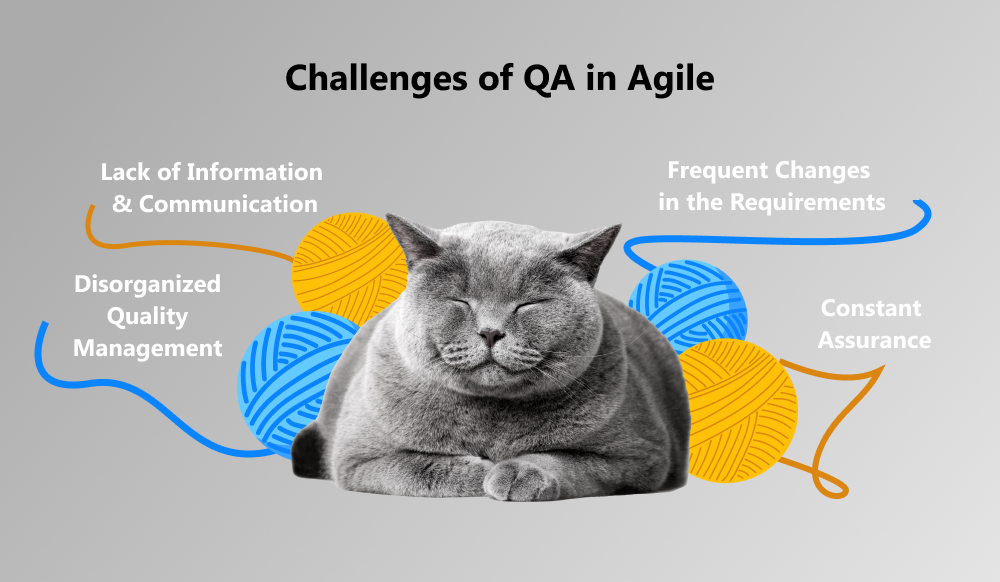In most professions, including IT, quality assurance teams are a given. Infrastructure, journalism, consumer goods — it is a common and valuable practice to quality check your end product. You avoid potential defects or errors that can damage your relations with your customer and, ultimately, impact your business. However, as the dynamics of IT have changed towards faster and more user-oriented practices and with Agile being one of the leading software development methodologies now, the quality assurance (QA) role in the project shifted, and its processes had to be adjusted.
written by:
Ekaterina Laptyuhova
Test Manager, Qulix Systems
In most professions, including IT, quality assurance teams are a given. Infrastructure, journalism, consumer goods — it is a common and valuable practice to quality check your end product. You avoid potential defects or errors that can damage your relations with your customer and, ultimately, impact your business. However, as the dynamics of IT have changed towards faster and more user-oriented practices and with Agile being one of the leading software development methodologies now, the quality assurance (QA) role in the project shifted, and its processes had to be adjusted.
Contents
Role of a Quality Assurance Team in Agile
Traditionally, during product development, the quality assurance team steps in at the end of the process, before releasing the software for production. Their roles and responsibilities are simple — systematically detect defects and mitigate risks before launch. For all industries, this has been the way of working for many years: editors checking their journalists' work; quality checks of car parts; stress tests of bridges.
But as technology develops at its exponential rate, the need for quick product iterations and developments becomes greater. As competitors release daily updates for their platforms, so you must find a way to keep pace. In the end, this requires an Agile approach rather than the traditional Waterfall process. But, the question is, where does the quality assurance team sit in this Agile process?
In short, everywhere. With the Agile methodology, the end goal of each sprint is a releasable product. The impact of this is that development and testing need to be done quickly and to a high standard. And the most efficient way to do this is not to, as it is traditionally done, pass the end code to the QA team to check and sign off, but rather to have them involved from the beginning. In this way, they can flag their requirements and incorporate them directly into the plan. Their definition of “done” is also included in the original requirement generation — meaning the end product after two weeks must meet their standards before release. Thus giving you a product that is both quickly developed and validated as of high quality.
In this piece, we’ll break down the best practices and the challenges of a QA team in the Agile way of working, so you too can improve the efficiency of your product development cycle.
Best Practices of Agile QA
Below, we list the best practices to incorporate a QA team into an Agile development process and how to make the most of their involvement.
1. Parallel Quality Assurance
Simultaneous checks of the QA team from the very beginning and within each sprint, also referred to as white-box testing, is a cost-effective and more efficient way of ensuring a high-quality end product. In the report conducted by the Systems Sciences Institute at IBM, it was seen to be 30 times cheaper to detect and fix bugs at the time of design and architecture in comparison with post-release.
To do this you must test as soon as a new feature is added to be able to identify issues early on. The benefits of this mean avoiding an overload of the QA team at the end of a sprint as well as reducing the risk of unexpected re-work. However, note that sometimes these checks will spill into the following sprint. It is a part of the process and must be accommodated into the project.
2. Test Automation
With a constant stream of testing comes an increase in workload. That is, however, unless you automate your testing. In fact, the automation of testing should be a critical element in your product development, since self-regulated and systematic testing will give you consistent outputs of your integration, saving your QA team time from repeatedly testing the new functionalities. This in turn gives your QA team time to then focus on more exploratory testing, deep-diving into the more complex cases to detect potential bugs.
All that being said, it is important to be cautious of over-automating. Your team should prioritize test cases and then determine which of them should be automated. Situations in which data might change or where a scenario isn’t consistently reproducible may not actually benefit from automation because the results can cause false failures.
3. Efficient Cooperation
As is the practice within the Agile methodology, the ownership of the quality of the output does not lie with one person/one team. Instead, it is the full team’s responsibility to ensure this. This then makes the cooperation between all parties essential for success — teamwork makes the dream work. To enable this, the keyword is transparency. Transparency in objectives, in the process and workflow, and communication. In the planning, it is crucial to ensure that the objectives and the standards are clear for all sprint members. Besides, it is also best to avoid too many user stories per sprint so that developers, engineers, and QA testers can work with clarity and closely together on them. The mantra of less is more in this circumstance will benefit both the quality assurance teams and the development.
4. Know Your Audience
The customer centricity mindset is a mainstay of the Agile methodology. And for the QA team, putting the end-user in mind will help to adjust their testings and requirements to what the end-user will ultimately need. This can help to cover gaps that may have not been previously seen from just a development standpoint.
5. Result-Oriented Processes
In a standard project, the quality assurance team is meticulous and focused on a defect-free product which requires time. With Agile projects, your QA team is testing and assuring quality on a smaller scale in a speed-focused manner. This requires specific objectives to ensure the team is able to deliver on time. The benefit of making the QA team more results-oriented — as is the way of working for Agile projects, with smaller, more achievable targets — is that it will give them a mindset similar to the developers, promoting cohesiveness and togetherness.
6. Risk Analysis
A standard quality assurance process in a project is that of risk analysis — normally focusing on errors and their impact on the product. Within an agile project, this receives even greater key power as this identifies focal points for testing in sprints. Meaning that upfront you can set your testing requirements to mitigate these risks.
Challenges of QA in Agile
We have been describing these best practices as the involvement of QA teams can prove challenging to those who have no experience in this way of working. In the next part of this article, we’ll flag to you the challenges that you will need to mitigate (some with the help of the above best practices) in order to reap the benefits of QA teams in an Agile project.
1. Lack of Information & Communication
It can happen that the product owners who are responsible for creating user stories for the sprint may not always gather all necessary information or points of interest. It may lead to the situation when the QA team doesn’t have a precise set of acceptance criteria and is not able to exhaustively test the new feature and its impact on the product, leading to potential bugs and defects.
To overcome this, the quality assurance team must take a high-level overview of the concept to begin the testing of the feature. This can help to minimize the impact of changing requirements or more details as the end-to-end process will still be tested.
Meanwhile, to make things work communication is the key. Thus, it is essential that there is effective communication established within the teams and that everyone adheres to the same process.
2. Frequent Changes in the Requirements
It can happen that a request from senior management arrives mid-sprint instructing a change in direction, whether that be by altering some of the initial requirements or at times even the entire scope of the project. This is of course challenging for any team member — and none more so than for the QA team — as it can mean previous work done will become null and void.
However, this is a part of the Agile way of working that developers and testers will have to adapt to. In the Agile methodology, flexibility and adaptability are key so whilst this is a challenge from a QA perspective, it is a part of the process that has to be accommodated.
3. Disorganized Quality Management
One particular challenge linked to Agile is limited tangible key performance indicators by which you can ascertain which code or new functionality is ready to be tested and which is not. It is imperative that these are predefined beforehand — be it through lines of code, unit test code inclusion, or anything else by which you can measure the development.
4. Constant Assurance
Unlike in a standard Waterfall project where the quality assurance comes at the end of the development, in an Agile project, the quality assurance team is involved before the development has begun. Testing is not anymore a phase, but a constant activity, which means a much bigger scope of work for the QA team.
This necessitates a greater involvement in the creation of user stories, working with the developers and the product owners to set stringent acceptance criteria, as well as learning how to provide early and continuous feedback to the development team. This will require a change of mindset for the QA team which can prove to be a challenge to them.
Bottom Line
At the end of the day, the success of Agile methodology highly relies on robust and healthy quality assurance processes. However, as the scope of work increases significantly, the QA team needs to be up for the challenge and acquire a fresh attitude, mindset, and a new set of skills.
To find out more tips on the best practices of integrating QA team into your Agile development process and tackling the challenges related to it, please contact our Support Team or visit our website.












